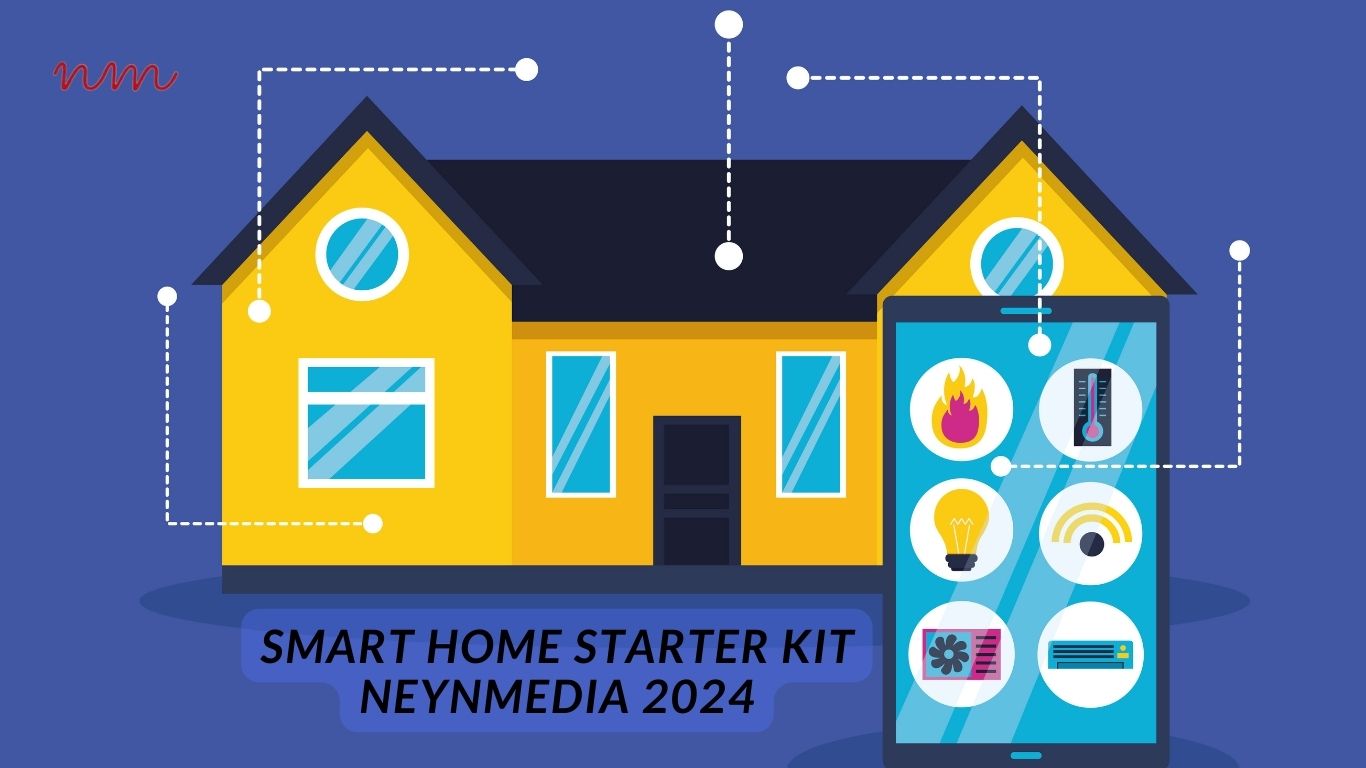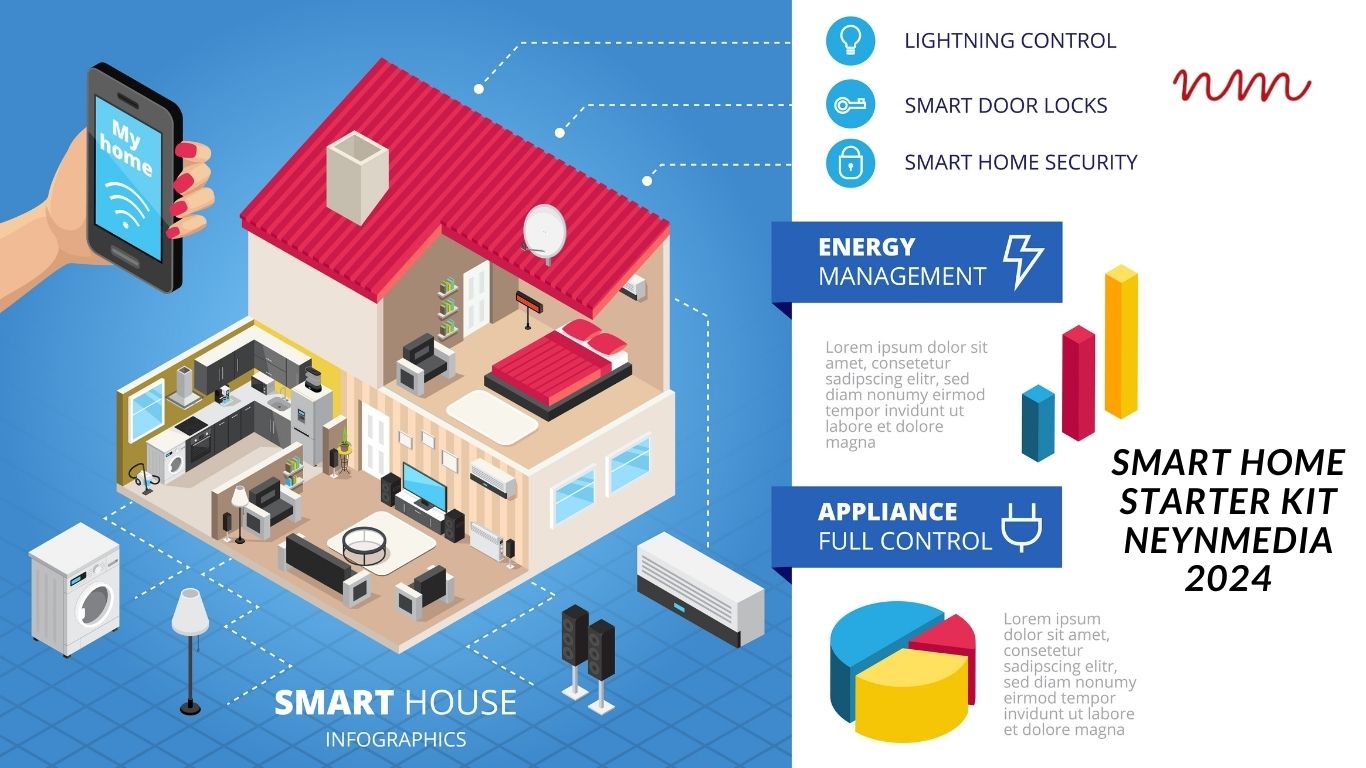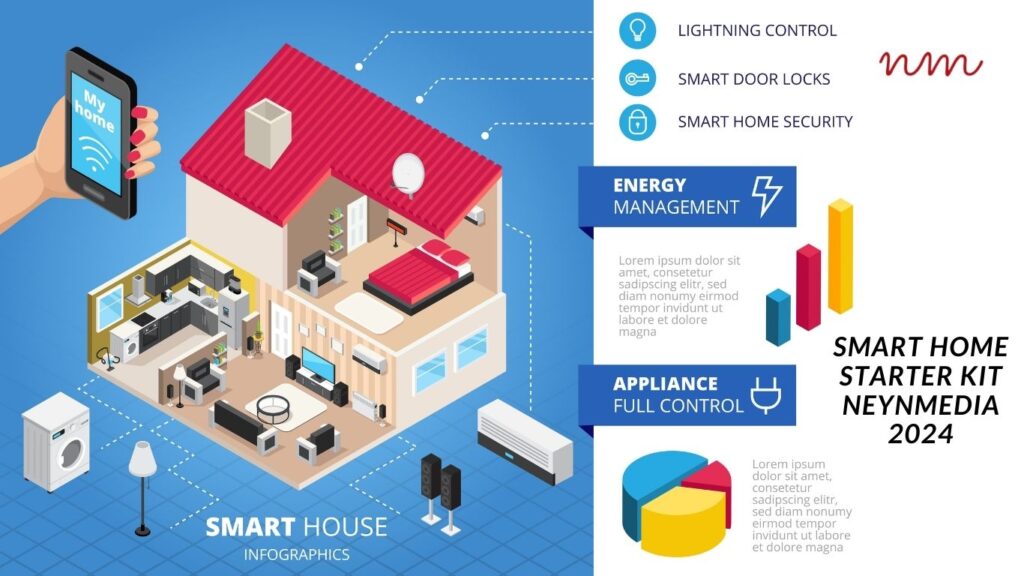Smart Home Starter Kit: Transforming Living Spaces
Smart homes are no longer a futuristic concept but a present reality, transforming the way we live and interact with our living spaces. One of the key entry points into the realm of smart home technology is the Smart Home Starter Kit. These kits comprise a curated selection of devices that seamlessly integrate with each other, offering users a convenient and efficient way to make their homes smarter.
I. Introduction
A. Definition of Smart Home Starter Kit
A Smart Home Starter Kit is a bundled collection of interconnected devices designed to enhance the functionality, efficiency, and security of a home through automation and connectivity. These kits typically include smart speakers, lighting systems, thermostats, and security components.
B. Importance of Smart Home Technology
The significance of smart home technology lies in its ability to simplify daily tasks, increase energy efficiency, and provide an added layer of security. As technology advances, the adoption of smart home starter kits has become increasingly popular among homeowners looking to embrace the benefits of a connected living environment.
II. Components of a Smart Home Starter Kit
A. Smart Speakers
Smart speakers, such as Amazon Echo or Google Nest, serve as the central hub for a smart home. They enable voice commands, act as personal assistants, and connect with other devices within the kit.
B. Smart Lighting
Smart lighting systems offer customizable lighting solutions, allowing users to control brightness, color, and schedules through mobile apps or voice commands.
C. Smart Thermostats
Smart thermostats provide energy-efficient temperature control by learning user preferences and adjusting settings automatically. They contribute to cost savings and environmental sustainability.
D. Smart Security Systems
Smart security components, including cameras, doorbell cameras, and motion sensors, enhance home security by providing real-time monitoring and alerts.

III. Setting Up Your Smart Home Starter Kit
A. Compatibility Considerations
Before purchasing a smart home starter kit, it’s essential to ensure compatibility with existing devices and platforms. Checking compatibility lists and reviews can help avoid issues during setup.
B. Installation Process
The installation process may vary, but most smart home devices offer user-friendly setup procedures. Follow the manufacturer’s instructions or utilize online tutorials for a smooth installation.
C. Connecting Devices
Once installed, connecting devices within the kit is crucial for seamless automation. Utilize the provided apps or voice commands to establish connections and set up automation routines.
D. Customizing Smart Home Settings
Personalizing automation routines, adjusting device settings, and integrating third-party applications contribute to a tailored smart home experience.
IV. Benefits of Using a Smart Home Starter Kit
A. Energy Efficiency
Smart home starter kits contribute to energy efficiency by optimizing lighting, heating, and cooling based on user behavior and preferences.
B. Enhanced Security
Integrated security systems offer real-time monitoring, remote access, and alerts, providing homeowners with enhanced security and peace of mind.
C. Convenience and Automation
Automation of routine tasks, such as turning off lights or adjusting the thermostat, adds convenience to daily life, allowing users to focus on more important matters.
D. Cost Savings
Smart home technology can lead to cost savings by reducing energy consumption, preventing unnecessary expenses, and increasing the lifespan of appliances.
V. Choosing the Right Smart Home Starter Kit
A. Research and Comparison
Thoroughly research available smart home starter kits, compare features, and read user reviews to make an informed decision.
B. Budget Considerations
Consider your budget and choose a starter kit that aligns with your financial constraints while still meeting your requirements.
C. Reviews and Ratings
Explore expert reviews and user ratings to gauge the reliability and performance of the chosen smart home starter kit.
D. Future Expandability
Opt for a starter kit with future expandability, allowing you to add more devices as your smart home needs evolve.
VI. Troubleshooting Common Issues
A. Connectivity Problems
Address connectivity issues by ensuring all devices are within range, updating firmware, and checking network settings.
B. Device Malfunctions
Troubleshoot device malfunctions by referring to user manuals, contacting customer support, or searching online forums for solutions.
C. Software Updates
Regularly update device firmware and software to ensure optimal performance and access to new features.
D. Customer Support Resources
Utilize customer support resources, such as online guides, FAQs, and helplines, for assistance with troubleshooting and technical issues.
VII. The Future of Smart Home Technology
A. Emerging Trends
Explore emerging trends in smart home technology, such as the integration of AI, machine learning, and voice recognition.
B. Integration with AI and Machine Learning
The integration of AI and machine learning enhances the predictive capabilities of smart home devices, learning user preferences and adapting to changing patterns.
C. Environmental Sustainability
Future advancements in smart home technology will likely focus on environmental sustainability, with devices designed to minimize energy consumption and reduce ecological impact.
D. User Experience Innovations
Anticipate innovations in user interfaces, making smart home technology even more user-friendly and accessible to a broader audience.

VIII. Real-life Examples and Success Stories
A. Case Study 1: Smart Home Transformation
Explore a real-life case study of a home transformed by a smart home starter kit, showcasing the positive impact on daily life.
B. Case Study 2: Impact on Daily Living
Discover how smart home technology has influenced the daily routines and habits of homeowners, adding convenience and efficiency.
C. Case Study 3: Security and Peace of Mind
Examine a case study highlighting the enhanced security features of a smart home starter kit, providing homeowners with peace of mind.
D. Case Study 4: Energy Efficiency Achievements
Learn about the energy efficiency achievements of a smart home user, showcasing the tangible benefits of adopting this technology.
IX. Personalizing Your Smart Home Experience
A. Customizing Automation Routines
Take advantage of customization options to tailor automation routines to your preferences, making your smart home uniquely yours.
B. Voice Commands and Personal Assistants
Explore the convenience of using voice commands and personal assistants to control your smart home devices effortlessly.
C. Smart Home Apps
Utilize dedicated smart home apps for easy control and monitoring of devices, ensuring a seamless user experience.
D. User-Friendly Interfaces
Choose devices with user-friendly interfaces, allowing for intuitive navigation and hassle-free management of your smart home.
X. Privacy and Security Concerns
A. Data Protection Measures
Understand the data protection measures implemented by smart home devices and take necessary steps to safeguard your privacy.
B. Secure Network Practices
Follow secure network practices, such as using strong passwords and regularly updating router firmware, to prevent unauthorized access.
C. Firmware and Software Updates
Stay vigilant about firmware and software updates to address security vulnerabilities and ensure the ongoing protection of your smart home.
D. User Education on Privacy Settings
Educate yourself on privacy settings and take control of what data your smart home devices collect, ensuring a balance between convenience and privacy.
XI. The Evolution of Smart Home Starter Kits
A. Past Advancements
Reflect on past advancements in smart home starter kits, showcasing the evolution of technology from its initial stages.
B. Present Innovations
Explore the latest innovations in smart home technology, highlighting the current state of the industry and available features.
C. Anticipated Future Developments
Anticipate future developments in smart home starter kits, considering emerging technologies and consumer demands.
D. User Adoption Trends
Examine trends in user adoption of smart home technology, understanding how the market is evolving and what to expect in the future.
XII. Smart Home Starter Kit Market Overview
A. Industry Growth
Analyze the growth of the smart home starter kit industry, considering factors such as market size, revenue, and global expansion.
B. Market Players and Competition
Identify key players in the market and assess the competition, understanding how different brands contribute to the overall landscape.
C. Consumer Preferences
Explore consumer preferences in smart home starter kits, gaining insights into what features and functionalities users prioritize.
D. Market Predictions
Consider expert predictions for the smart home starter kit market, evaluating the trajectory of the industry in the coming years.
XIII. Conclusion
A. Recap of Smart Home Benefits
Recap the key benefits of adopting a smart home starter kit, emphasizing the positive impact on energy efficiency, security, and convenience.
B. Encouragement for Adoption
Encourage readers to explore the world of smart home technology and consider the transformative possibilities it offers for their living spaces.
C. Final Thoughts on Smart Home Starter Kits
Share final thoughts on the significance of smart home starter kits in shaping the future of home automation and connected living.
Related Post:
- Setting Up a Smart Home | NeynMedia 2024
- Zigbee Smart Home Hubs 2024 | NeynMedia
- American Home Shield: Protecting Your Home, Ensuring Your Peace of Mind | neynmedia 2024
- Smart Home Products: Revolutionizing Modern Living | neynmedia 2024
- Top 10 Books to Read Before You Die | TopTen360
- Adidas Top Ten: A Sneaker Legacy Unveiled | TopTen360



